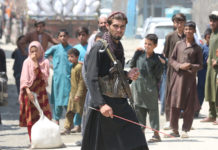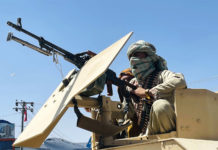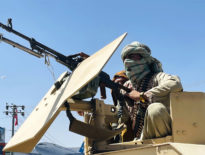The rise of the Taliban in Afghanistan is the result of a history marked by local political ambitions, regional rivalry, and conflicting geopolitical aspirations, in which the religious element cannot be ignored. Who are the Taliban? What motivates them? Who helps them? What did they do when they ruled over Afghanistan, and what could they do now that they are back in power?
“Like many other similar projects at its heart lay the exaggeration of a threat and poorly defined geopolitical ideas. To that were added unrealistic attempts to democratise a society made up of many tribes.” This is how the former Soviet President Mikhail Gorbachev, who in 1989 led the withdrawal of Soviet forces after 10 years of campaigning in Afghanistan, described the American presence in the same country.
Most retrospectives of Taliban influence in Afghanistan date back to the Russian invasion in 1979. But to better understand the Afghan context, we need to go back even further in history.
The territory that makes up Afghanistan today bears age-old scars of imperial domination, conquest, and infighting. Its position at the intersection of Asia and Europe has made the land a permanent strategic target. Darius, king of Babylon, Alexander the Great, Mahmoud of Ghazni—considered the greatest conqueror of Afghanistan—then Genghis Khan—considered one of the greatest conquerors of all time—all believed that Afghan territory should be included in their empire.
Many Arab conquerors shared the same vision while they sowed the seeds of Islam on Afghan soil. Thus, in the nineteenth century, when the British were grappling with the Russians for spheres of influence in Asia, Afghanistan, first united as a country in the eighteenth century, already had a long history of Islam (after centuries of Buddhism and Zoroastrianism). At the time, however, the Afghans’ religion was seen as a negligible detail to the great powers fighting for domination in the region—a conflict that has gone down in history as “The Great Game.”
The Great Game
When Britain misinterpreted the intentions of their “enemy” Russia, believing that the Russians were interested in invading India, or, according to other historians, when Britain calculated that East India was threatened by an alliance between Afghan Emir Dost Mohammed Khan and the ruler of Iran, it went on to invade Afghanistan and start a war that came to be called the “Afghanistan Disaster.”
The Afghans, who were organized in a feudal system and had no army, just tribal members trained to fight under various smaller leaders, despised the British whose leaders had opulently settled in their territory, installed a leader the people rejected, and forced their emir into exile in India. After three attempts to annex Afghanistan, and weakened by World War I, the British withdrew defeated from Afghanistan, which promptly proclaimed its independence.
Turbulent years of economic, political, and social reforms followed. Afghanistan began to flirt with communism and allied with Russia. In the 1970s, pro-Soviet Prime Minister Mohammed Daoud Khan abolished the monarchy and named himself president of the country, but was later assassinated in a communist conspiracy. The Afghan Communist Party came to power, but its power was undermined by internal divisions and Soviet interference. The new communist government turned the people against themselves when it publicly rejected any association with the Islamic religion. This subsequently gave rise to a civil revolt.
The alphabet of Jihad
During those tumultuous times, the United States, fighting the Cold War with Russia, was supplying weapons to Afghan rebel groups that were anti-communist. American President Jimmy Carter even expressed concern that the Russian invasion, which began in 1979 with the aim of strengthening the power of the communists, posed “a serious threat to peace” in the region. So the Americans proceeded to make efforts to strengthen Afghan independence, providing humanitarian aid to civilians and ammunition to mujahideen (Islamist guerrilla fighters, better known as jihadists) in Operation Cyclone, a secret war in Afghanistan.
Afghans had been fighting the Russian occupation for a decade, with millions of civilians displaced and forced to flee the war. The Americans and various Muslim groups provided support during this time, with many foreign fighters joining the Afghans in hope of a victory against the Russians. Many of them were driven by a combination of religious and political motives, wanting Islamic Afghanistan to defeat the atheism of the invading Russian communists.
Osama bin Laden was one of these foreign fighters, arriving from Saudi Arabia at the age of 22, and using his construction experience and money to help build training bases for mujahideen. In other words, the US unknowingly financed the person who would become the country’s number one enemy. But “the point is not the individuals,” as an American official said in 1999, commenting on the situation in which the United States financed jihadist groups. “The point is that we created a whole cadre of trained and motivated people who turned against us. It’s a classic Frankenstein’s monster situation.”
The war Afghanistan waged against itself
Three years after the withdrawal of the Soviet army in 1992, the communist government was ousted and the country proclaimed itself the Islamic State of Afghanistan. From the outside, the war seemed to be over—but Afghanistan was now at war with itself.
Several different mujahideen armies have tried to fill the power void left by the fall of the communist government by negotiating for a coalition government. However, one of these groups, which is believed to have been supported by Pakistani intelligence services, opposed the coalition and tried to start an interim government independently. This led to the outbreak of a civil war involving five separate mujahideen armies. Their clashes, which destroyed the city of Kabul and caused a massive wave of refugees, have sparked outbreaks of insurgency in several parts of Afghanistan. The Taliban were themselves a product of such an outbreak.
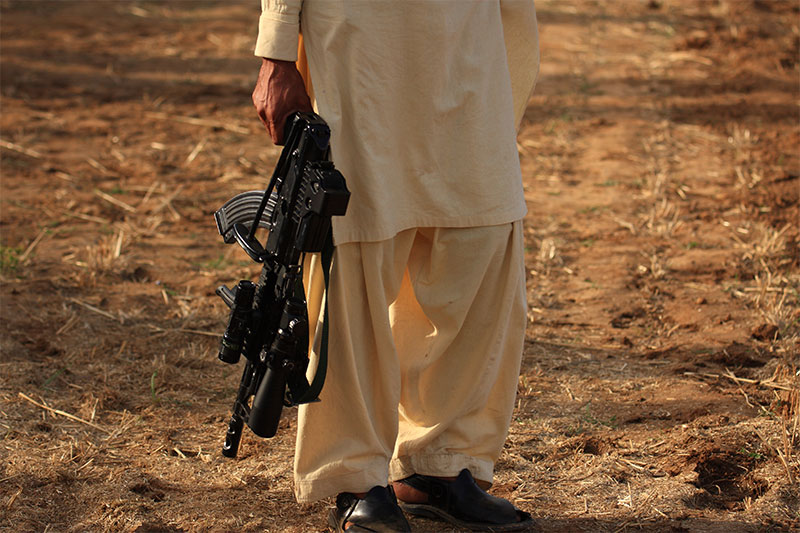
The rise of the Taliban
In 1995, a group called “the students” (because it was made up of young, poorly educated people, trained in conservative Islamic religious schools or madrasas in Afghanistan and Pakistan), was launched in an attempt to materialise their own vision for the good of Afghanistan. In 1996, the Taliban captured the capital and declared Afghanistan an Islamic emirate. In 1998, the Taliban controlled 90 percent of Afghanistan and were internationally disavowed for their extreme interpretation of Islamic law.
The climate dominated by chaos and corruption in Afghanistan was the most appropriate backdrop against which Afghans could come to believe in the Taliban’s promise they would bring peace and give Islamic law its proper place in society. What the Afghans would discover, however, is that the Taliban’s view of Islam was far more than just strict.
Under the Taliban’s regime, a draconian dress code was imposed, which required women to wear the burqa veil and men to maintain their beards according to fixed standards. Women were denied access to public life, including access to education after the age of 10 (which the Taliban motivated in negotiations as a measure to protect girls who would often fall victim to sexual assault on the way to school). Exceptions were rare: women were allowed to study medicine (since women could only be checked by women doctors) and to study the Qur’an. Girls or women who tried to continue their education in underground schools were flogged if caught.
Public flogging was a frequently applied punishment in cases of dress code violations. Due to the gender segregation of hospitals and the limitation of women’s access to health services, the life expectancy of women in Afghanistan dropped to 46. Theft was punishable by amputation of the hand, for both men and women, while adultery could even lead to a death sentence. Men suspected of having been sexually involved with other men were also executed in public.
“With no functioning judicial system, many municipal and provincial authorities use the Taliban’s interpretation of Shari’a (Islamic law) and traditional tribal codes of justice,” a report by the UN Department of Humanitarian Affairs noted. The same report concluded that the “absence of an intellectual vision for Afghanistan, beyond this strict application of Shari’a principles, is a crucial element in understanding the Taliban movement in its early stage. The Taliban emerged as a response to the chaos and lawlessness under the mujahideen commanders, not because of the absence of a government… They responded to the prevailing lawlessness by providing a textual interpretation of the Koran. In areas where the text is silent, they provide for strict rules, such as the prohibition of flying kites, playing music, or trimming beards.”
How to finance the ruin
According to the United Nations, the Taliban and their allies were responsible for 76% of deaths among Afghan civilians in 2010. Some analysts have even said that 4 out of 5 civilian deaths can be blamed on the Taliban. A 1998 humanitarian report said that about 160,000 Afghan refugees were prevented from receiving food after the Taliban bombed the Bamyan airstrip where a UN aid cargo plane was parked.
The Taliban captured the country by taking control of its roads, and they maintain their power by cultivating their financial strength. According to an analysis by The Conversation, the Taliban support themselves with annual revenues of $1.5 billion from a wide variety of sources: opium cultivation (90% of the world’s heroin comes from the Taliban-controlled Helmand River Valley), mining, “taxes“, charitable donations from NGOs or individuals from other countries (Saudi Arabia, Pakistan, Iran, and several other Persian Gulf countries), exports, and foreign governments (Russia, Iran, Pakistan and Saudi Arabia).
Afghanistan, the graveyard of empires?
Many analysts deplore the withdrawal of US forces from Afghanistan as a shameful failure, which will be paid for mainly with the rights of Afghan women. However, in a thoughtful piece titled “Why is Afghanistan the graveyard of empires?”, analyst Akhilesh Pillalamarri wrote, as early as four years ago, that the presence of the Americans in Afghanistan does nothing but win the Taliban time. “The Taliban are unlikely to cut a deal because time is on their side, and they merely have to wait it out until the United States decides to leave,” Pillalamarri wrote. “The United States has been involved in Afghanistan for almost 16 years, making it the longest conflict in its history… Despite spending more on Afghanistan than on rebuilding Europe after World War II, little progress has been made. It would not be surprising if the Taliban controlled all of Afghanistan within a decade.” This is exactly what we are witnessing today, with the Taliban’s siezing of power once again.
What’s next?
After the September 11, 2001 attacks, US President George W. Bush said “the Taliban will pay a price.” However, the American invasion proved, just like the British and Russian invasions did, that those who end up paying the highest price are not the insurgents (currently the Taliban), but ordinary people, whose only fault is having been born there. What is the price they will need to pay? The UN Refugee Agency warned in July that Afghanistan was heading for a major humanitarian crisis.
With almost half (42.47%) of the population under the age of 15 and nearly 63.7 percent under the age of 25, Afghans who witness the installation of the Taliban 2.0 government are not the same Afghans who received the insurgents’ rule with high hopes in the 1990s. Despite the Taliban’s promises that this time it will be different, the population is scared, distrustful and willing to risk their lives fleeing, rather than live under a regime they no longer believe in.
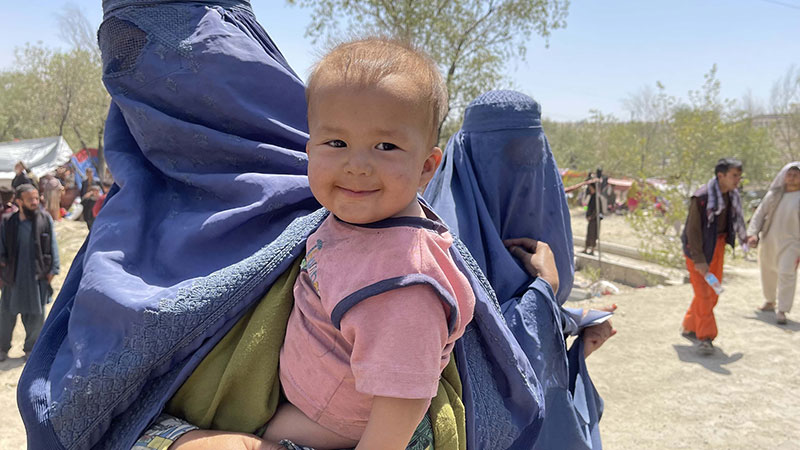
The entire world is watching the situation in Afghanistan with sadness and indignation. Many are trying to find meaning in what is happening by establishing blame. Following this path, we can focus on the role of the United States in Afghanistan, on how their view of the interests of Afghans has distorted Afghan society, and we can conclude that forced education is weakening the force of education. But this lesson is as difficult to learn in geopolitics as it is to learn in one’s personal life.
You can’t change someone you want to have a good relationship with according to your ideals, unless you manifest, in equal amounts, the nobility of interest in the good of the other, the patience to listen and understand them, and an acknowledgement of the impracticality of forcing change upon them. But countries on three continents have cheated on all these chapters when it comes to Afghanistan. First the British, then the Russians, then the Americans marched haughtily into the country, treating the local structures as pawns in a game in which the only rule that mattered was the ideology of the dominating force.
We cannot hope that the Taliban will lead Afghanistan to fulfill its potential as a country, but neither can we have hope that the Americans can ignore the decades in which they themselves engraved in the Afghan mentality the violent resistance to the occupiers, and gain Afghan compliance with Western democratic ideals. Whoever sows wind, reaps a whirlwind, and, unfortunately, what is happening today in Afghanistan is nothing short of a hurricane.
Today’s Afghanistan is a reflection of a double human limitation: one cannot change what one knows only superficially, and one cannot whole-heartedly adopt a change that one does not understand. Americans believed that democracy was good for Afghans, but they tried to teach it to them by its opposite: the unilateral and arbitrary decision to do as the Americans thought was best. How could anything good come out of that? How could anything good come out of today’s situation?
Alina Kartman is a senior editor at Signs of the Times Romania and ST Network.














